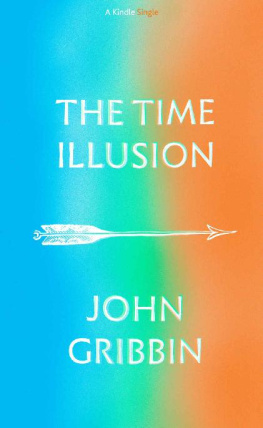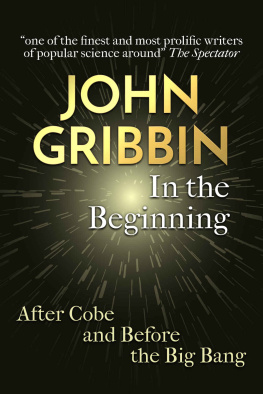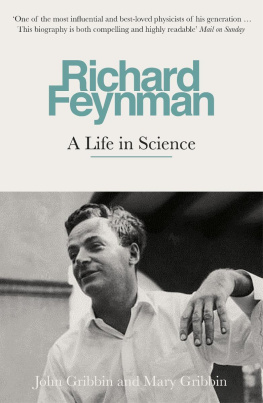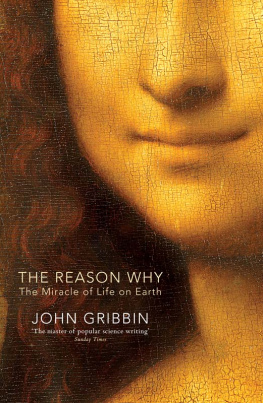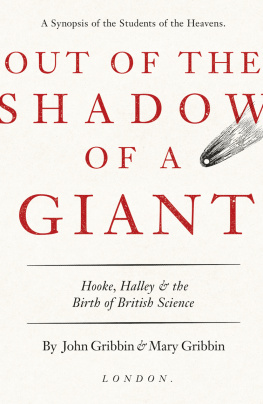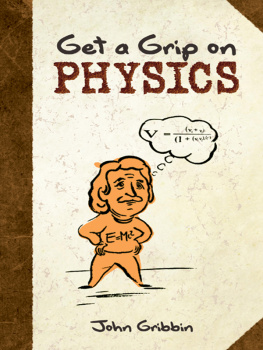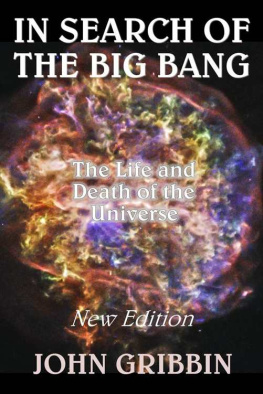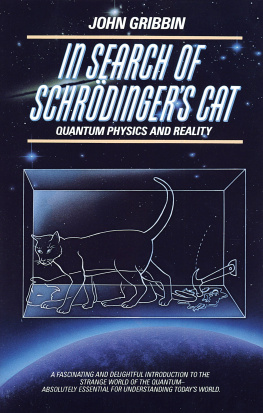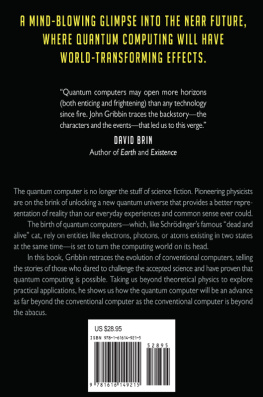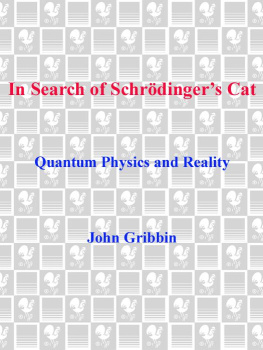The Time Illusion
The arrow that points but does not move
John Gribbin
Copyright 2016 by John Gribbin
People like us, who believe in physics, know that the distinction between past, present and future is only a stubbornly persistent illusion.
Albert Einstein
Once Upon a Time
The mystery of time can be summed up in a so-called paradox attributed to the Ancient Greek philosopher Zeno of Elea. Elea was a community on the south-western coast of Italy, and the leading Eleatic philosopher was Parmenides, born around 539 BC. He argued that multiplicity, motion and change are mere appearances, and that what we would now call the Universe is unchanging, only our impression changes. Zeno was one of Parmenides students, and offered several paradoxes to highlight these ideas. Unfortunately, Zenos own writings have not survived, and all we have are second-hand accounts of what he said, from people such as Plato and Aristotle (who were not fans of Eleatic philosophy). It has even been suggested that Zeno intended his examples as satires of the arguments used by opponents of Eleatic philosophy. We shall never know for sure what was in his mind, but nevertheless the arrow paradox sums up the mystery of time and motion.
Zeno starts from the straightforward statement that in order for motion to occur, an object must change its position. Then he discusses an arrow in flight. At any instant of time, the arrow occupies a space equal to itself, and is not moving (no less an intellect than Bertrand Russell called this a plain statement of an elementary fact). The arrow cannot move from the space it occupies to where it is not, because in any instant there is literally no time for it to move. At every instant the arrow is motionless. So motion is an illusion. Or, as Aristotle summed up Zeno for us, if everything when it occupies an equal space is at rest, and if that which is in locomotion is always occupying such a space at any moment, the flying arrow is therefore motionless.
For more than two thousand years, the conventional wisdom has been that Eleatic philosophy is a poor description of reality and that Zenos paradoxes are no more than clever word-play. If you had the same sort of education as me, you encountered Zenos puzzles at an early age, and then ignored them. I hope to persuade you that this was a mistake. Times arrow certainly does point in one direction, from what we call the Past towards what we call the Future. But does it move? Before I answer that question, I need to sum up the conventional wisdom, starting with Isaac Newtons image of a predictable clockwork Universe.
The world view that held sway from the late seventeenth century to the early twentieth century is known as Newtonian physics (sometimes as classical physics). Isaac Newton was far from being the only contributor to this package of ideas for example, Galileo Galilei carried out key experiments investigating inertia, and Robert Hooke came up with the insight now often referred to as Newtons First Law. But Newton put everything together in one package, with mathematical equations to describe precisely what was going on, and published it in an influential book, the Principia, in 1687. So that is often regarded as the date when classical physics took centre stage, and Newtons name is indelibly associated with it.
Classical physics rests upon three laws of motion, summarised and explained in the Principia. The first (which Hooke pointed out to Newton) is that every object stays at rest or moves in a straight line at a constant speed unless a force acts upon it. As Hooke also pointed out, this explains the orbits of the planets around the Sun. They want to move in a straight line, but are tugged into curved orbits by the force of gravity, pulling them inwards (centripetally) towards the Sun. Several people realised, early in the second half of the seventeenth century, that the force needed to do the job must obey an inverse square law that is, it is one-quarter as strong at twice the distance, one-ninth as strong at three times the distance, and so on. But it was Newton who proved that only such an inverse square law would do the job, so it became known as Newtons law of gravity.
The second law of motion says that when a force does act on an object it causes an acceleration at a rate given by dividing the strength of the force by the mass of the object. So you need a bigger force to make a more massive object accelerate at a particular rate. But note that acceleration means a change in the speed of the object, or a change in its direction of motion (or both); the planets in orbit around the Sun are accelerating, both because their speeds are changing and because the direction they are moving in is constantly changing (Zeno might disagree!).
The third law says that if one object exerts a force on another object, the second object exerts an equal and opposite force on the first (action and reaction are equal and opposite). So the force of gravity from the Sun pulling on the Earth, for example, is exactly balanced by the force of gravity from the Earth pulling on the Sun, and if I am foolish enough to kick a brick, the force of the kick on the brick makes it move, but the force of the stone on my foot gives me a bruise.
Because these are absolute laws that obey precise mathematical equations, it seemed they made the Universe predictable. Before the Newtonian revolution in science, there was still scope to invoke a god (or gods) to explain what was going on in the Heavens. After Newton, it became clear that everything could be explained using the same laws that apply here on Earth, or across the Solar System three laws of motion and a theory of gravity. Taking just the Sun and its family of planets, it looked as if, if you knew the exact position of every object at the same instant in time and all the forces (most notably gravity) acting on them, you could use Newtons equations to calculate not only exactly how they would move forward into the future, but also, by running the calculations backwards, all of their movements in the past. Of course, it would be fantastically difficult for a human being to do the calculations, even with the aid of a computer, but that is not the point. The Universe does the calculation itself (it is its own computer, if you like) in obedience to the equations. It has no choice but to follow the rules. This is why Pierre Simon Laplace, sometimes referred to as the French Newton, replied to Napoleons enquiry about the role of God in science with the dismissive remark I have no need of that hypothesis.
This is what gave rise to the analogy of the Universe with a great clockwork machine, perhaps wound up by God and set running in the beginning, but now continuing inexorably down an undeviating and predetermined path. Not so different, when you come to think about it, from the Eleatic philosophers image of a fixed Universe.
But what was the stage on which all this activity took place? Newtons idea was that it all took place against a background of absolute space, which was the same everywhere and always at rest, almost literally like a stage. In the Newtonian Universe, the Earth, Moon, Sun and other objects move through this absolute space, and their speeds relative to absolute space are measured in terms of absolute time, which can be imagined as the regular ticking of some ultimate cosmic clock.
Its worth quoting Newtons own words, from the Principia:
I.Absolute, true, and mathematical time, for itself, and from its own nature flows equably without regard to anything external, and by another name is called duration: relative, apparent, and common time, is some sensible and external (whether accurate or unequable) measure for duration by means of motion, which is commonly used instead of true time; such as an hour, a day, a month, a year.
Next page
